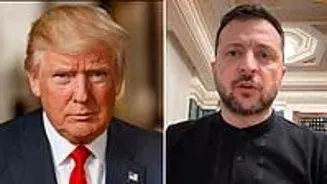To counter US President Donald Trump’s increasing efforts to corral and penalise India economically while soft-pedalling America’s real threat, China, some are suggesting India must increase foreign tourist
arrivals. That is a brilliant idea: not only does it earn forex and create jobs, but a lot of people from around the world planning to holiday in the US are looking for alternatives, as are lakhs of Indians who go there every year. So why not divert US tourism traffic?
After all, barring Disneyland and Yellowstone National Park’s “Old Faithful”, there are hardly any lures the US can offer for which India does not have an alternative, although the size and scale may not be identical. After all, the US is three times the size of India area-wise, although its population is one-fourth that of India’s. Our destinations are second to none, but India has to get its act together to maximise their appeal as viable choices for foreign holidayers.
The US has Niagara Falls, India has Chitrakoot Falls. The US has the Empire State Building, India has the Taj Mahal. The US has the Rockies, India has the Himalayas. The US has the Statue of Liberty, India has the Statue of Unity. The US has the Grand Canyon, India has Gandikota Canyon. The US has Hollywood, India has Bollywood, Mollywood, Tollywood, etc. Not to mention beaches, adventure sports, sand dunes, forested vistas, architecture, and even casinos and shopping.
But what India boasts by way of tourism assets is, sadly, offset by wide gaps in supporting infrastructure. To overcome that lacuna as fast as possible requires political will as well as public participation, as there is more to a holiday than just the place; it is the entire experience. If India sets its mind to it, there is no reason why travellers thinking of an American holiday won’t seriously consider an Indian one instead, even if Trump might prefer to visit Balochistan.
Roads and air connectivity have improved immensely in India, especially in the past decade. Although there are complaints about delays and airport glitches, these are no different from the usual operational snafus in European and American airports during peak season or extreme weather. Train services, often seen as a more eco-friendly way to travel, are not, however, comparable to those in Europe and the US, either in speed, punctuality, or onboard facilities.
With a majority of Indians already using the railways for internal journeys, the pressure to provide upgraded services of international standards across the board is a tough ask—but it is not impossible. State-of-the-art, maybe even seasonal, foreign tourist-specific trains (perhaps with hard currency fares) on certain routes are an easy first step, with airport-like hubs in major metros, perhaps. That would take some pressure off airports and airline seats at peak times.
Roads, airports, etc, being the responsibility of governments, the main stumbling block for entrepreneurs is the sheer number of permissions required to set up new hotels and other private tourism facilities. On average, there are twice as many permissions required from government departments in India than in our closest tourist-magnet neighbouring countries, such as Thailand and Malaysia. That hindrance can and should be speedily addressed by the government.
Yet, given that India has a high population density and pressure on land, permissions for new tourism infrastructure have to be targeted, keeping ecological concerns in mind. More hotels and resorts cannot be allowed to encroach on farmlands or undisturbed biodiversity hotspots in the name of development and jobs. One solution could be to offer government incentives to upgrade thousands of existing tourism-related properties to international standards.
Once tourism infrastructure, both the government and private components, is complete, then—and only then—there must be a renewed publicity campaign in major international markets (especially those considering the US as an option!) spearheaded by the government, using all the new media tools now available, including influencers. Campaigns have to include not only information about the destinations but also the quality of the infrastructure and safety.
Incredible India was an incredible success, but it must be reworked to address a new generation of travellers. Not all of them are only attracted by the “exotica” aspect of India, from fortresses and coconut palm-fringed beaches to Mughal monuments. India’s wildlife sanctuaries—the only place to see, say, Asiatic lions or the one-horned rhino—to golf and wellness retreats are a powerful draw. But only if a comfortable journey and a safe sojourn can be ensured.
But even the best efforts can fail due to misinformation campaigns about India, probably at China’s behest. Negative publicity, especially on safety and security issues, is endemic. The US, however, is spared. It is seen as safe, though the FBI’s crime statistics estimates for 2024 released last week say that a violent crime occurred every 25.9 seconds: a murder every 31.1 minutes and a rape every 4.1 minutes. And yet this actually marked a 4.5 per cent drop from 2023!
Terrorist attacks in India are far less than the number of mass shootings in the US per year—Pahalgam in 2025 versus 270 mass shootings up to mid-August. But warnings for tourists are routinely issued, particularly by Western nations, only for India. Visitors to the US, including Indians, are undeterred by those scary rape and shooting statistics, but a single well-chosen terror attack on an Indian tourist spot queers the entire pitch. Conspiracy theories are warranted.
More so, as even a casual perusal of the internet will throw up plenty of “news” about rapes of tourists in India, but only concerted digging will unearth instances of similar violence against female tourists in any European country or the US. The suppression of some news and highlighting of others to exaggerate the prevalence of rapes in India versus the rest of the world points to manipulation. Experts need to be roped in to counter algorithmic disinformation.
If properly planned and implemented, there is no reason why upgrading India’s tourism assets and amenities will not tempt visitors from all over the world, including those intending to holiday in the US, and even Americans used to domestic vacations, within the next couple of years. Then, after his White House stint ends and when Mar-a-Lago becomes a bit boring for a retired President, Trump himself may want to vacation in India too, rather than Pakistan.
The author is a freelance writer. Views expressed in the above piece are personal and solely those of the author. They do not necessarily reflect News18’s views.














